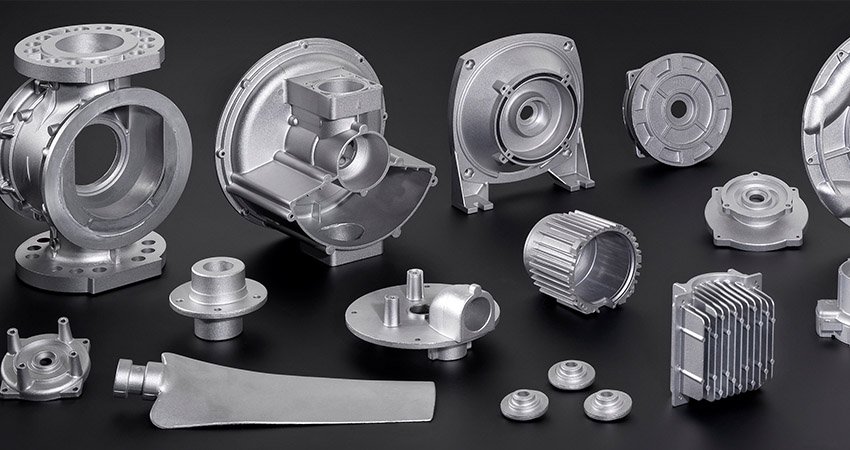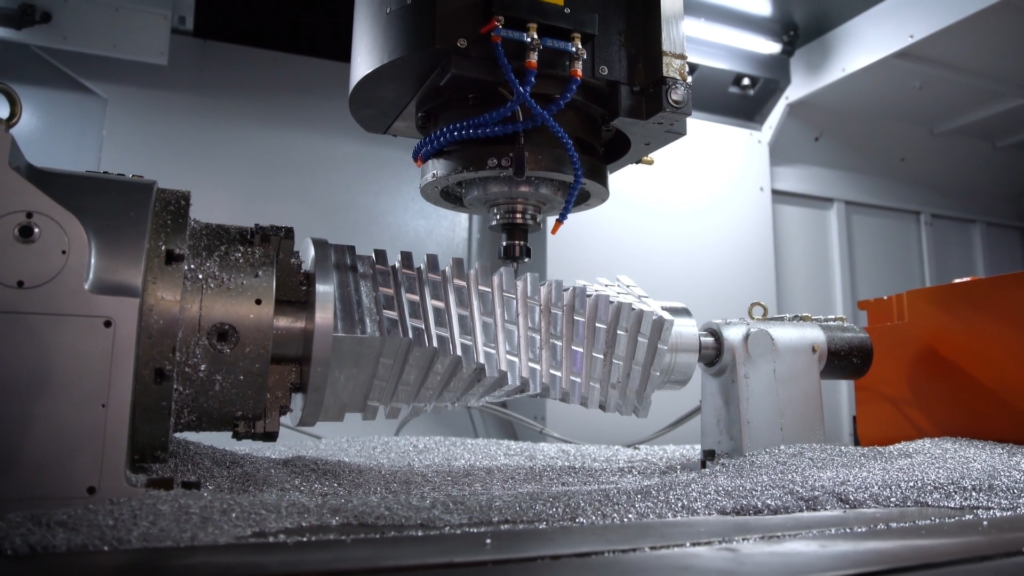With technological advancement, numerous revolutionary technologies can be utilized for metal fabrication. It was not possible in the past to create a product with the desired attributes. Nowadays, engineers and product teams have many options for manufacturing advanced and complex metal parts.
Depending on the part design and its intended use, there are several effective methods available. But CNC machining and casting are amongst the most widely used manufacturing technologies.
But how do you come to know which technology suits appropriate for a particular type of part creation? Whether it is CNC machining or casting. Sometimes, it is required to use both the processes combine. It mostly happens, when a part is created using casting and to achieve desired attributes in the final product, making the use of CNC machining becomes a necessity.
CNC stands for Computer Numerical Control. CNC machining is a subtractive manufacturing process, in which a piece of material is converted into a custom-designed product. It is done using coded programmed instructions and different machine tools. While die casting is a manufacturing process used to create a product by pouring molten metal or other material into a mold (the die). The mold consists of a hollow cavity of the desired shape. After injecting the melting metal, it is allowed to solidify. Then it is ejected or broken out of the mold to get the final product.
When it comes to choosing between CNC machining and casting, numerous factors need to be considered. Both the processes have some similarities and differences too. Everything you need to know is discussed below in detail. Read on for further details.
What is CNC Machining?
CNC technology offers high-precision parts with tight tolerances, excellent processing efficiency, and superb durability. Since a workpiece is subtracted to achieve a required part shape. Therefore, parts manufactured using CNC machining possess the same physical properties as their bulk material. It is used in many industries like aerospace, defense, automotive, and across other important sectors.
CNC technology has few limitations. Capital cost is amongst the biggest headache. That includes purchasing expensive machinery. Complex geometrical shapes and material considerations are also prominent. Because the scrap material cannot be recycled.
If we talk about difficult part designs having internal geometries or steep undercuts that sometimes becomes difficult to machine because of the complexity involved. But a workshop having a seasoned team consisting of intelligent engineers, expert designers, and technicians then parts with a higher degree of complexity can be manufactured with a little effort.
What is Die Casting?

Die casting is a manufacturing process used to create geometrically complex parts. The big advantage of using this technology is that once a mold is created for a specifically shaped metal fabrication then it can be used again. Reusing a mold only requires a molten metal to be poured into it at very high pressure and let it dry.
Die casting is a cost-effective method when we require mass-production of identical parts. Because the mold can be used again and again. But using the same mold takes time for waiting for it to dry and using it again. Casting finds common applications in automotive parts, gears, toys, marine applications, etc.
Limitations of using die casting include, we cannot create parts with large dimensions. As for as we remain in the capacity limits of the machine then we can use the casting process. Otherwise, it becomes useless. But with large CNC machining, we can manufacture as larger parts as we require. Another big drawback of casting technology is that we are limited to material selection. Because metal alloy malleability limits choosing other materials. But CNC process offers a diversified variety of materials.
What is the Difference between Die Casting and CNC Machining?
Well, both the manufacturing processes are sued for metal fabrication. But CNC machining is superior to die casting in many ways. Those are discussed ahead in detail. As far as the CNC process is concerned, it is an automated technology. Which uses computers to execute numerical control instructions. Whereas, die casting involves melting metal or other materials and injecting them into a mold. Then it is cooled down after waiting a considerable amount of time to get the final product.
Key Factors for Choosing between CNC Machining and Die Casting
While considering a specific process for metal fabrication whether it is CNC machining or die casting, predominantly three factors are focused on. First of all, the cost is compared, then comes the volume and size of the part and third is the recycling capability of the process used.
Considering a mass production of identical parts in both the processes. Once the CNC machine gets ready for executing the machining action or a mold (die) is created then it only requires the repetition of the process in both cases. We can create a large number of parts just by repeating the process. But die casting is preferable in this case. Because the mold created once can be used hundreds of thousands of times and that is cheaper.
When it comes to part design modifications then CNC technology overweighs die casting. To change the design in the CNC process only requires amending the CAD design and CAM code. Then even the whole design or slight modifications will be made easily. Design modifications can also be done during the process. But in die casting, part design modifications require a new mold. That sometimes can be extremely expensive and can affect the cost and deadlines of the whole project badly.
If recycling and environmental impact are concerned then die casting is a better choice. Because the CNC process yields a lot of waste material that cannot be recycled. But in the casting process, the molten metal is directly poured into the die. That does not leave any materials behind and becomes environmentally friendly.
Factors That Make CNC Machining Superior to Die Casting
CNC machining is a more advanced and demanding technology in the manufacturing field due to many obvious reasons. Why CNC machining is superior to die casting is discussed below
No Cost of Mold Creation
Manufacturing parts using the CNC process does not need to create a mold. But in die casting, mold creation is mandatory. Without mold, there will be no manufacturing. While in CNC machining, different tools are used to perform numerous machining processes. These tools are controlled through numerical instructions and directed through a computer. So in a term cost saving of mold, CNC technology is cost-effective.
Dimensional Accuracy and Stability
Parts created using CNC machining have excellent dimensional accuracy and stability. This is because the whole process is automated and controlled through CNC instructions. That mostly eradicates human involvement in the process and the chances of errors become very less. But in die casting, melting a metal requires extreme temperatures, then it is poured under too high pressure into the molds and extreme cooling is also provided to solidify the part. All this hassle makes the part vulnerable to dimensional inaccuracies.
Faster Mass-Production
CNC machining is comparatively a faster manufacturing process as compared to die casting. Die casting part manufacturing requires creating a mold, melting the metal, pouring it, waiting to let it cool, and after that final part is ejected or broken out of the mold. That is a very time-consuming process. But in CNC machining, requires generating a CAD design, converting it into CAM code, setting the machine up, and then execute the machining action. That does not require much time to perform. But it also depends on the part design complexity in both the manufacturing techniques.
Once mold setting and CNC machine setup are ready then tens of thousands of parts can be manufactured. But CN machining requires less time for a mass-production as compared to die casting.
Complex Part Design Creation
Creating a complex part design is comparatively easier in CNC technology. In casting, creating a complex design depends on mold creation. If it finds difficult to create the die of the required shape then die casting cannot produce the part. But in the CNC process, extremely complex part design creation may be difficult but if a team consists of CNC experts then complex parts can be created with a little effort.
Conclusion
I think it would have been cleared that why CNC machining for metal fabrication is more preferable to die casting. But both processes have their own merits and demerits. In some cases, CNC technology will find suitable and in other cases, die casting will be serving the purpose. But it depends on your intended use and attributes required in the final part. But analyzing the merits and demerits of both the technologies and points made above, CNC machining is superior to casting.
If you are looking for a custom-designed part manufacturing or prototype, JUST CONTACT US! We are amongst China’s leading CNC workshops. We have advanced CNC machines and a large variety of latest tools as well. We guarantee excellent accuracy and durability. Our team consists of seasoned and well-reputed engineers, designers, and technicians. We are an ISO9001 certified CNC workshop.


